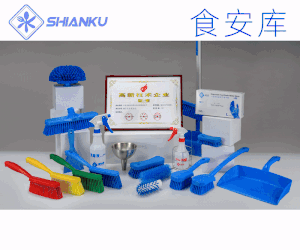近日,華中農(nóng)業(yè)大學(xué)食品科學(xué)技術(shù)學(xué)院潘思軼教授領(lǐng)銜的果蔬加工化學(xué)與綜合利用團(tuán)隊,針對食品加工業(yè)高質(zhì)量發(fā)展的新要求,以高強(qiáng)度超聲波技術(shù)作為新興食品加工技術(shù)的代表,系統(tǒng)揭示了高強(qiáng)度超聲波在食品加工中的作用機(jī)制,全面比較了其技術(shù)優(yōu)勢,詳細(xì)闡述了其在食品加工領(lǐng)域的最新應(yīng)用,相關(guān)成果以“Sonoprocessing: mechanisms and recent applications of power ultrasound in food”為題,在線發(fā)表在Critical Reviews in Food Science and Nutrition上,為食品產(chǎn)業(yè)高效綠色加工提供了新思路。
食品高效綠色加工是食品工業(yè)發(fā)展的趨勢,也是實現(xiàn)食品加工產(chǎn)業(yè)高質(zhì)量發(fā)展的必然途徑,更是全球食品加工領(lǐng)域高度關(guān)注的熱點(diǎn)及難點(diǎn)。高強(qiáng)度超聲波技術(shù)作為一種新興食品加工技術(shù),在食品高效綠色加工及制造領(lǐng)域被高度關(guān)注。與傳統(tǒng)食品加工技術(shù)相比,高場強(qiáng)超聲波技術(shù)可以提供獨(dú)特的超聲物理場和超聲化學(xué)場,已經(jīng)在食品輔助加工、食品分子結(jié)構(gòu)修飾、促進(jìn)有利反應(yīng)發(fā)生、食品安全與保藏、食品污染物處理等方面體現(xiàn)出巨大的應(yīng)用潛力,并逐步實現(xiàn)產(chǎn)業(yè)化。然而,高強(qiáng)度超聲加工在諸多食品加工領(lǐng)域的作用機(jī)制一直不明晰,闡明高強(qiáng)度加工在食品領(lǐng)域的作用機(jī)制一直是食品高效綠色加工及制造的熱點(diǎn)。我校果蔬加工化學(xué)與綜合利用團(tuán)隊自2009年便開展高強(qiáng)度超聲加工技術(shù)在植物蛋白質(zhì)結(jié)構(gòu)、食品加工特性、超聲化學(xué)反應(yīng)和超聲乳化技術(shù)等方面的應(yīng)用及機(jī)制研究,不斷完善食品超聲加工的理論框架,拓展食品超聲加工的應(yīng)用場景,挖掘食品超聲加工的優(yōu)勢,為系統(tǒng)性的開展食品高強(qiáng)度超聲加工機(jī)理探索、技術(shù)開發(fā)及創(chuàng)新制造提供了基礎(chǔ)。
該成果以團(tuán)隊多年來的研究工作為基礎(chǔ),系統(tǒng)性的總結(jié)了高強(qiáng)度超聲加工技術(shù)在食品輔助加工、食品分子結(jié)構(gòu)修飾、促進(jìn)有利反應(yīng)發(fā)生、食品安全保障、食品儲藏、食品污染物處理等方面作用機(jī)制及最新應(yīng)用成果,從多個維度比較了高強(qiáng)度超聲加工技術(shù)的優(yōu)勢,全面分析其產(chǎn)業(yè)化趨勢,為食品產(chǎn)業(yè)高效綠色加工提供了新思路。
該成果聯(lián)合了德國、丹麥、西班牙等8個國家在食品超聲加工領(lǐng)域的知名學(xué)者參與合作,胡昊副教授為論文通訊作者,該項目受到國家自然基金、中國科協(xié)青年人才托舉工程等項目資助。
【英文摘要】
There is a growing interest in using green technologies in the food industry. As a green processing technique, ultrasound has a great potential to be applied in many food applications. In this review, the basic mechanism of ultrasound processing technology has been discussed. Then, ultrasound technology was reviewed from the application of assisted food processing methods, such as assisted gelation, assisted freezing and thawing, assisted crystallization, and other assisted applications. Moreover, ultrasound was reviewed from the aspect of structure and property modification technology, such as modification of polysaccharides and fats. Furthermore, ultrasound was reviewed to facilitate beneficial food reactions, such as glycosylation, enzymatic cross-linking, protein hydrolyzation, fermentation, and marination. After that, ultrasound applications in the food safety sector were reviewed from the aspect of the inactivation of microbes, degradation of pesticides, and toxins, as well inactivation of some enzymes. Finally, the applications of ultrasound technology in food waste disposal and environmental protection were reviewed. Thus, some sonoprocessing technologies can be recommended for the use in the food industry on a large scale. However, there is still a need for funding research and development projects to develop more efficient ultrasound devices.
論文鏈接:https://www.tandfonline.com/doi/full/10.1080/10408398.2022.2161464











 行業(yè):
行業(yè):






 魯公網(wǎng)安備 37060202000128號
魯公網(wǎng)安備 37060202000128號



